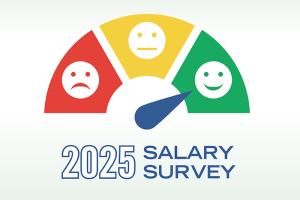Why staying current with code updates is critical for health care facilities
In the complex world of health care facilities management, staying up to date with the latest codes and standards isn’t just a best practice, it’s essential. While the Centers for Medicare & Medicaid Services (CMS) often lags in updating its Conditions of Participation (CoPs) sometimes by a decade or more, there are compelling reasons why health care professionals should actively engage with and apply the most current codes available.
1. ASHE Advocacy: A voice for practical, patient-centered code development
The American Society for Health Care Engineering (ASHE) plays a vital role in shaping the codes that govern health care facilities. ASHE’s Advocacy Team and members work tirelessly to address issues as they arise, whether it’s correcting misinterpretations, removing outdated requirements, or introducing new provisions that reflect real-world challenges. Our success stems from a deep understanding of the health care environment and a commitment to improving patient care through practical, feasible code changes.
Over the past decade, ASHE has tracked more than 600 code changes that positively impact health care environments. These include clarifications, conflict resolutions and proactive updates that reflect the evolving needs of facility managers. Without ASHE’s involvement, code updates would be riddled with impractical requirements and costly surprises.
2. Embracing new technology with updated codes
Technology in health care evolves rapidly, and outdated codes often fail to address new innovations. This leads to confusion among authorities having jurisdiction (AHJs), who may interpret the absence of guidance in varying ways. For hospital systems operating across multiple jurisdictions, this inconsistency can create significant operational burdens.
Take, for example, flexible medical gas tubing, a technology not addressed in the 2012 editions of the National Fire Protection Association’s NFPA 101, Life Safety Code, and NFPA 99, Health Care Facilities Code. However, these are the codes referenced in CMS’s CoPs. Without updated codes, facilities would not be able to use this product. Fortunately, CMS granted a categorical waiver, allowing consistent use nationwide. This underscores the importance of updated codes in enabling safe, efficient adoption of new technologies.
3. New practices require clear guidance
Some may assume that if a practice isn’t addressed in a code, it’s fair game. Unfortunately, that’s rarely the case. In reality, AHJs determine compliance, and without clear code language, interpretations vary widely. This sometimes leads to unsafe or overly burdensome requirements.
A prime example is the introduction of hybrid operating rooms. In the absence of specific guidance, many AHJs combined requirements for operating and imaging rooms, resulting in unnecessary mandates like access to toilet facilities and increased risks from mixing staff roles. Updated codes help avoid these pitfalls by providing clear, tailored guidance.
4. Newer codes offer solutions when older ones fall short
Even when CMS mandates older code editions, newer codes can offer valuable guidance in areas not previously addressed. For instance, microgrids, which are critical for energy resilience, aren’t covered in the 2012 codes. However, newer editions provide frameworks for their safe and effective implementation. Only those familiar with current codes can identify and leverage these opportunities.
5. ASHE serves a diverse membership beyond CMS requirements
Not all ASHE members are bound by CMS’s outdated codes. Many operate under state or private regulatory bodies that adopt current editions. ASHE supports these members by offering educational resources and frequent updates, ensuring they remain informed and compliant with the latest standards.
6. Code update presentations: Informing and engaging the community
ASHE’s conferences and code update presentations serve dual purposes: educating attendees and gathering feedback for future advocacy. As the gap between adopted and current codes widens, member engagement becomes even more critical. Without firsthand experience of new code impacts, feedback dwindles making it harder for ASHE to advocate effectively.
7. Preventing unwanted surprises through continuous involvement
Code development involves many stakeholders, each with their own interests. ASHE ensures that proposed changes are practical, feasible and ultimately beneficial to patient care. Our advocacy emphasizes simplicity, clarity and consistency, which makes codes easier to interpret and apply.
ASHE also considers financial implications. For example, we successfully opposed a proposal to the International Building Code requiring equivalent underground space in hurricane-prone areas. While well-intentioned, the proposal ignored the logistical and safety challenges of relocating patients underground, as well as the prohibitive costs.
Advocate for change and stay ahead
The health care environment is dynamic, and codes must evolve to reflect new technologies, practices and challenges. ASHE’s Advocacy Team ensures that these changes are grounded in facts and focused on improving patient care. By staying current with code updates, health care facilities professionals can avoid confusion, reduce compliance burdens and contribute to a safer, more efficient health care system.
It’s time we all advocate for CMS to adopt current codes more frequently and take full advantage of the opportunities that updated standards provide.
Chad Beebe, AIA, CHFM, CFPS, CBO, FASHE, deputy executive director of the American Society for Health Care Engineering.





